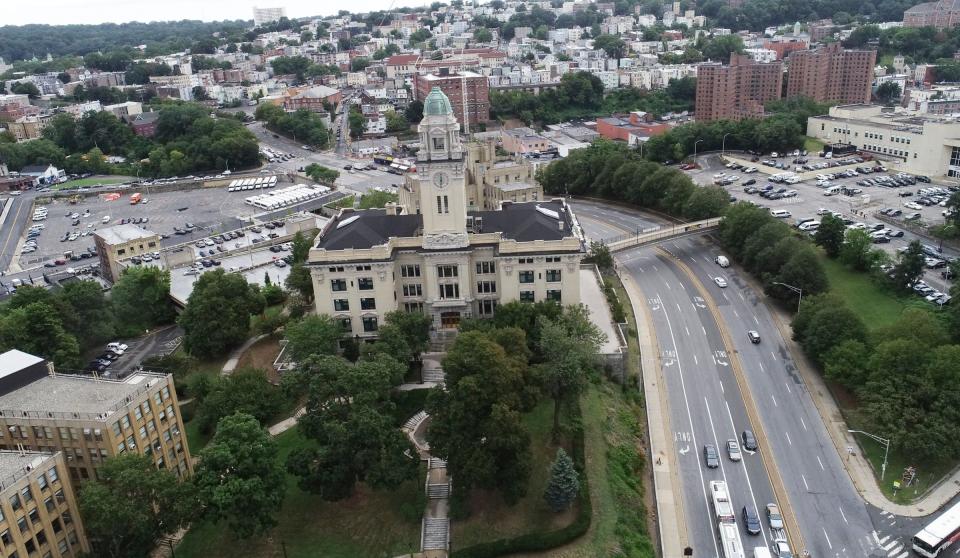'The Joy Experiments': Building an innovation ecosystem in Westchester
As a part of its ongoing Westchester Innovation Network initiative, The Business Council of Westchester recently invited Paul Kalbfleisch, a Canadian and author of "The Joy Experiments: Starting A New Conversation on City Building," to speak to its BCW Board of Directors. Kalbfleisch is one of the world’s foremost experts on innovative communities — communities that attract and retain innovators for what he calls “the building of the habitat for human spirit.” What ensued was a great conversation about what Westchester needs to be thinking about in order to create a vibrant, innovation ecosystem. What are the four key pillars of innovative communities? The good news is that much of this exists in pockets in Westchester — now we just need to harness it.

Here are some examples of the areas that will create a vibrant innovation ecosystem in Westchester for the years to come:
Habitat of the human spirit
Traditional businesses can work and make decisions in silos, but when building infrastructure for the human spirit, it's better to think of cities and communities as interconnected habitats. We should continually look to connect businesses, government and institutions at every stage of innovation. Seeking private and public partnerships, bringing in students of all ages to every program, finding new opportunities to create collaborative experiences and creative interactions is key. We need to demonstrate that the innovation and entrepreneurial career path is a viable one for students. The key to facilitating this level of creative interaction is to find ways to bring people together to facilitate joy and play, in addition to work and connections. Innovative communities spotlight art and creativity, they facilitate outdoor space interactions, they’re playful and vibrant, and they breathe new life into struggling spaces.
Experimentation
There are no eureka moments in innovation. It is always a series of projects and experiments that offer insights and progress (even if they fail). Kalbfleisch talks about the pressure to create the one big idea and how that’s a problem. Instead, he advocates for the experimentation mentality — coming up with 50 brilliant ideas and testing and iterating on those to see what might stick. Driving toward one big idea is time consuming and risky. Instead, the experimentation approach and testing hypotheses is the way that innovative communities thrive. We need to create programs with enough guardrails to support and monitor, but without the constraints that would prohibit the level of creativity necessary to advance innovative thinking.
Eliminate barriers
We cannot expect innovative companies or the talent they employ to conform to the processes and behaviors of the status quo. Lengthy, time consuming applications and processes will be rejected outright. We must eliminate barriers to entry and innovate the process. By making processes and procedures streamlined, more innovators will participate. Innovators do not have the patience or time for endless discussions and meetings without clear, attainable goals. And the speed with which they operate and need to get their products or services to market to get first mover advantage drives them away from anything they view as too time-consuming or wasteful of their valuable resources. They also will steer clear of anything that requires extensive reporting, metrics and measurement that will also take them away from their work. We must create structures, environments, and timelines that afford companies the ability to experiment and even fail once or twice before achieving success. We must understand the speed with which innovators move and appeal to that speed with our programs and activities. And we also have to understand that creating affordable spaces for both work and living are critical to ensuring that entrepreneurs can take risks and can stretch their valuable resources for the benefit of their idea.
You attract what you celebrate
Innovators breed more innovation. When you take the time to celebrate innovation and habitats for the human spirit, you attract more of the same. We need to identify the most creative, collaborative, and interesting work, spaces, leaders, innovative thinking, and collaboration and shine a light on it. When innovators and creators are highlighted, others will identify our communities as places that honor this type of work.
It’s an interesting conversation to be sure and one that’s critical to ensuring the next generation of vibrant businesses in Westchester. This blueprint for innovative communities only works if we have the energy and commitment of all of our leaders across business, non-profit, education and government to take the steps needed to behave differently. We are sure with the incredible leaders we have in Westchester in the sectors mentioned, we have a jump start on building this ecosystem. Now it’s up to us to come together to build on these innovation pillars. The BCW Westchester Innovation Network is making that happen. WIN is here to support every Westchester innovator and municipality.
Dr. Marsha Gordon is the president and CEO of The Business Council of Westchester
Paul Kalbfleisch is a skilled writer and creative business leader, but primarily he is a creative collaborator, placing himself in the middle of large projects requiring a strong focus on vision and imaginative strategy.
This article originally appeared on NorthJersey.com: 'The Joy Experiments': Building an innovation ecosystem in Westchester
